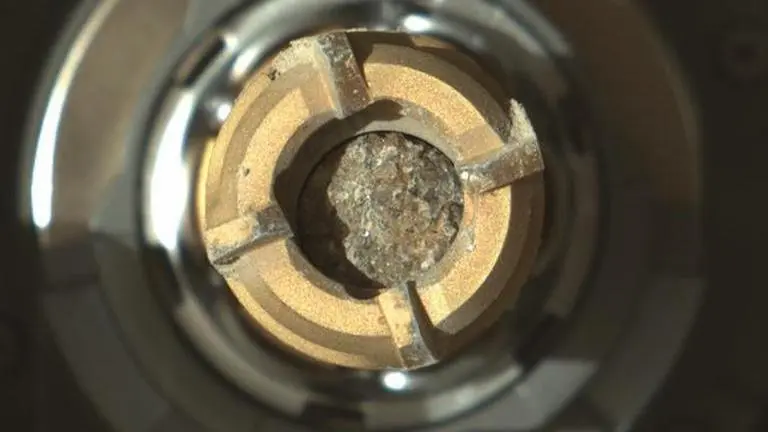Updated 17 November 2021 at 22:40 IST
Perseverance rover successfully scoops third layered rock sample from Mars
The Perseverance rover has scooped up a piece of Martian rock from the Séítah region of Jezero crater nearly a week after it found the unique layered rocks.
- Science News
- 2 min read

The Perseverance rover has scooped up a piece of Martian rock from its current exploration site nearly a week after it found unique layered rocks in the Séítah region of Jezero crater. The sample extracted by NASA’s robotic explorer is loaded with olivine, a greenish mineral whose origins will now be determined by the scientists. In a Twitter update given by the rover, it shared three pictures and wrote, “Another little piece of Mars to carry with me. My latest sample is from a rock loaded with the greenish mineral olivine, and there are several ideas among my science team about how it got there. Hypotheses are flying! Science rules.” This has marked Perseverance's third successful attempt at extracting rock samples that will soon head to Earth in the coming years. Check out the images below.
Another little piece of Mars to carry with me.
— NASA's Perseverance Mars Rover (@NASAPersevere) November 16, 2021
My latest sample is from a rock loaded with the greenish mineral olivine, and there are several ideas among my science team about how it got there. Hypotheses are flying! Science rules. #SamplingMars https://t.co/L6lhCNdqWq pic.twitter.com/bFXxExhS1P
Perseverance hunts ancient water clues on Mars
The rover is currently examining the Séítah region, as scientists speculate that the presence of unusual rocks might give a clue regarding Mars' past and the history of water's presence on it. According to a previous revelation made by scientists, the rocks being abraded by Perseverance exist in layers, the type which is only formed in water. These rocks samples being collected will soon be transported to Earth when NASA will send a spacecraft to retrieve them from the red planet.NASA had said that the rock samples will help scientists piece together the timeline of Mars' past and give an insight into the planet's volcanic activity and periods of persistent water.
Get a load of these layers! I’m getting out my abrading tool to take a look inside.
— NASA's Perseverance Mars Rover (@NASAPersevere) November 4, 2021
Layered rocks like this often form in water, and can hold clues about what their environment used to be like. Let’s see if this would be another good place for #SamplingMars. pic.twitter.com/2CYc4xF6nq
Erin Gibbons, of McGill University in Canada, said in his blog post as per Space.com, "Each layer records information about the environmental conditions present when the rock formed, and changes in layer thicknesses or textural expressions indicates an environmental change". He added that "by studying the directions that the layers tilted, we determined that the rocks of Séítah are likely the most ancient rocks exposed in all of Jezero Crater". The rover landed in the Jezero crater in February this year under NASA's Mars Exploration Program and has been looking for signs of life since the very beginning. Earlier in October, scientists confirmed, based on the rover's findings, that the 45 kilometres wide Jezero crater once housed giant lake billions of years ago.
Image: Twitter/@NASAPersevere
Published By : Harsh Vardhan
Published On: 17 November 2021 at 22:40 IST
